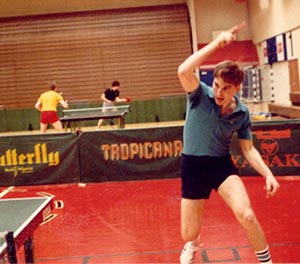Frozen Shoulder Syndrome
I've been seeing a physical therapist three times/week, 90 minutes/visit, for two months, where I go through rigorous massage and shoulder stretching routines. I also do a 20-minute stretching routine twice a day.
Yesterday I saw the doctor again for an update. He put me through a number of tests. The good news was that my shoulder flexibility has gone from 50% normal to 70%. The bad news is that the shoulder hurts just as much as before - no improvement there. I can play with the pain - it's not that bad - but I'd just be injuring the shoulder further.
I'd already been diagnosed with a frayed rotator cuff, tendonitis, and bursitis in the shoulder, and with an extreme lack of shoulder flexibility due to muscle stiffness. Yesterday the doctor gave me a final diagnosis - Frozen Shoulder Syndrome. If I were to quit table tennis completely and only do normal things with the shoulder, it would gradually go away in 1-3 years - but that's not really an option, is it? So here are my real options.
OPTION ONE: I continue the stretching routines, and the shoulder will most likely return to near normal - but it would take many months, and could take a year, and it may never get well enough to play serious table tennis again.
OPTION TWO: Surgery. Tomorrow morning I'm meeting with a shoulder surgeon to go over this option. But the doctor told me that if I go this route, the shoulder most likely will be back to normal about two months after the surgery. Based on what I know right now (but before meeting with the surgeon), this sounds like the best option. But I am a bit surprised at the two-month recovery period from surgery to serious table tennis. He may have meant two months to "normal" activities. Table tennis isn't normal.


 Photo by Donna Sakai
Photo by Donna Sakai


